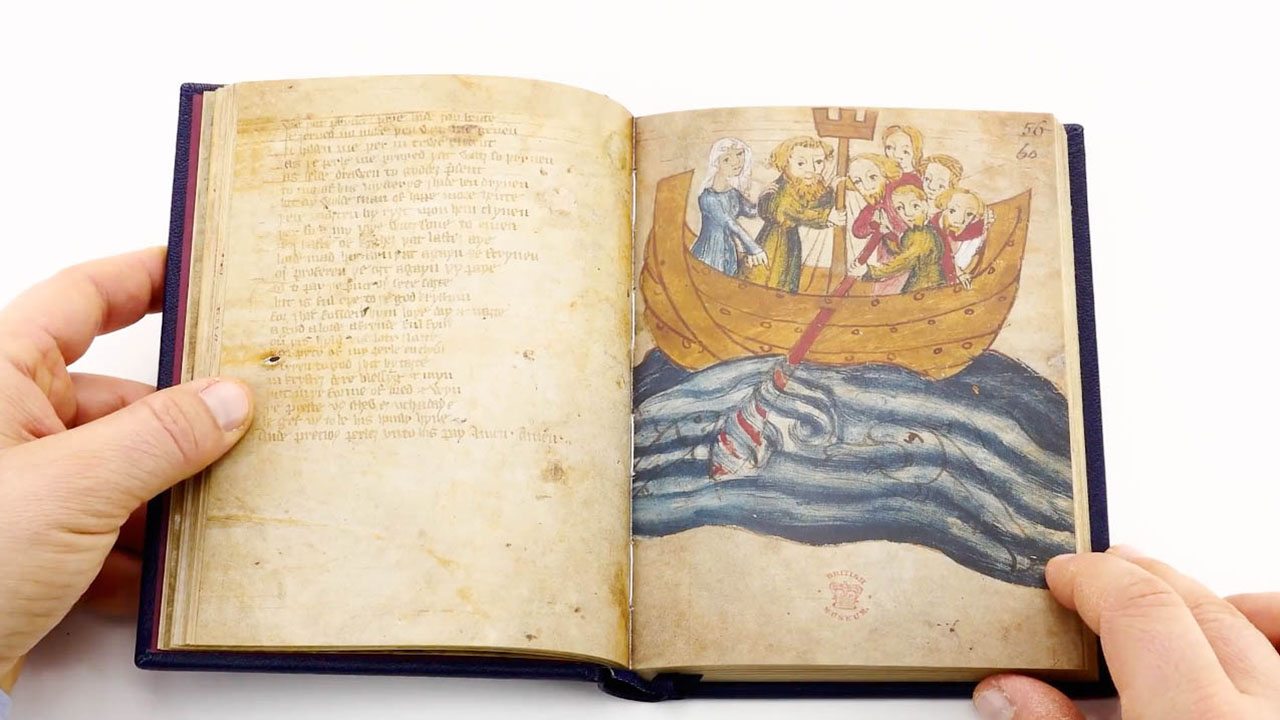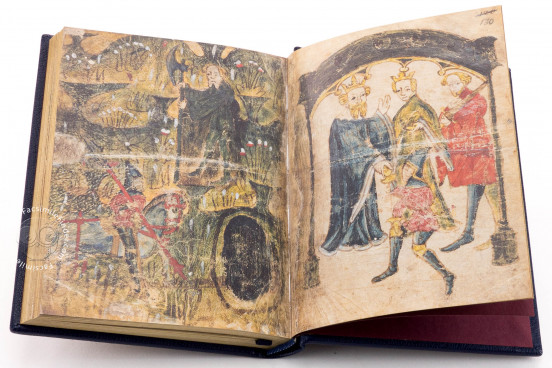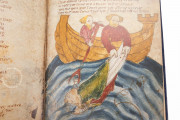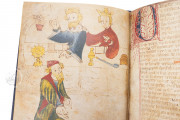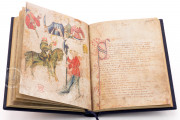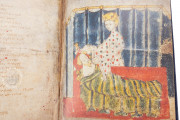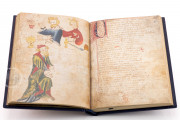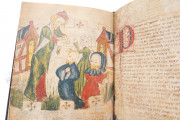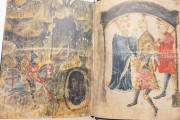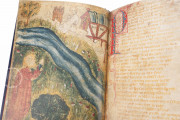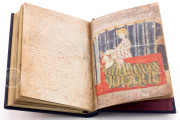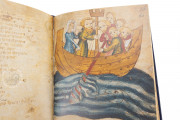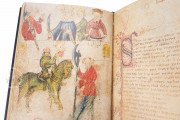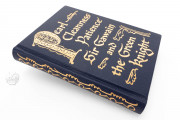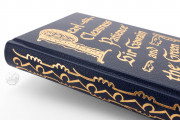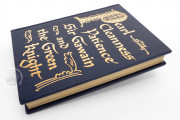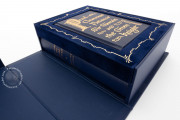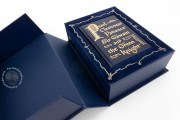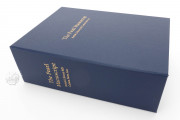The Pearl Manuscript uniquely preserves four poems in Middle English alliterative verse composed by a single anonymous author. Created around 1400, it is one of the very few illustrated medieval manuscripts of English literature. The poems comprise a dream vision, two biblical commentaries, and an Arthurian romance. The approach to the themes is unfailingly Christian, but the allegories are complex and sometimes perplexing. Eleven full-page and one smaller miniature illustrate the poems.
The first poem, Pearl, gives the manuscript its name. The others are Cleanness (or Purity), Patience, and Sir Gawain and the Green Knight. The author of the poems is referred to as the Pearl-Poet (or the Gawain-Poet).
One or Two Colorists
The drawings for the miniatures were executed by someone other than the two people (or perhaps one person) who did the coloring. There are many instances where the colorists either disregard or misunderstand the intentions of the draftsperson. For example, in more than one instance, pointing fingers have been obscured by the colorists' interventions (e.g., fols. 42r and 42v [pencil foliation]). The colorists may have made their contributions years after the text was written and the drawings were made.
Poetry Illuminated
Despite the allegorical nature of the poems, they attracted visualization in the manuscript. There are four miniatures each for Pearl fols. 41r-42v) and Sir Gawain (fols. 94v and 129r-130r) and two each for Cleanness (fols. 60r-v) and Patience (fols. 86r-v).
The miniatures for Pearl include representations of the poem's dreamer and the maiden (or pearl) of his dream. In each, a stream is a prominent element. The fish in that stream tend to dominate the paintings. The miniatures for Sir Gawain show the Arthurian courtly context for the story (fols. 94r and 130r), as well as aspects of the knight's adventures.
Unusual Visual Details
The illustrations for Cleanness and Patience focus on Old Testament stories, mostly presented as negative examples for the reader. They include a miniature of Noah's ark in the Great Flood, which is understood as a punishment for sexual uncleanness (fol. 60r). Six men and a woman but no animals occupy the vessel.
The story of the Hebrew prophet Jonah, who was unwilling to accept the Lord's call to preach in Ninevah, is illustrated in two scenes. In one, the prophet is cast into the mouth of a great fish extraordinary for its fang-like teeth (fol. 86r).
Poetic Form Revealed
The poems are in alliterative verse (poetic lines containing words that begin with the same sound). Pearl is in a more demanding verse form that also involves rhyme. The poems all treat interactions between humans and the supernatural.
The text was written by a single scribe in long lines (i.e., in one column) in a competent but hardly beautiful Gothic Textualis. The stanzas of the poems are articulated in the manuscript by pen-flourished initials or paraphs (paragraph marks). The scribe may have made the drawings for the illustrations. Both are in iron-gall ink, generally used for writing but not underdrawing in the period.
A Surprise among the Cotton Manuscripts
The antiquary Robert Cotton (1571-1631) acquired the manuscript from Henry Savile (1568-1617). Robert Cotton had the poetry collection bound with unrelated material as MS Nero A.x. It is now bound separately.
Robert's grandson, John Cotton (1621-1702), bequeathed the Cotton manuscripts to Britain "for Publick Use and Advantage." The Cotton manuscripts formed one of the foundation collections of the British Museum's library. They were transferred to the British Library upon its establishment in 1973.
We have 1 facsimile edition of the manuscript "Pearl Manuscript": Pearl Manuscript facsimile edition, published by The Folio Society, 2015
Request Info / Price
